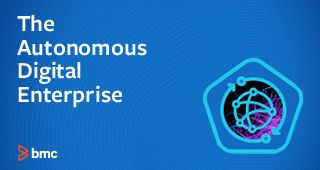No industry has been under the spotlight more in the last two years than healthcare, which was forced to both embrace—and accelerate—its digital transformation to respond to the pandemic. In a recent HSJ Immersive feature in the UK, BMC Software and Fusion Global Business Solutions, an elite BMC partner, explored the essential need to put “backroom” IT functions in place to support healthcare’s real-time digital evolution.
The feature focuses on three areas:
- Improving the experience of the end user
- Achieving efficiency through automation
- The brain, the body, the beauty
Improving the experience of the end user
In the first chapter, the feature focuses on the digital transformation journey of the Northumbria Healthcare Foundation Trust, which aimed to improve the experience of the end user. In so doing, the foundation shifted from a paper-based, manual environment to one that leveraged intelligent technology to deliver a mobile app, self-service portal, and other digital interactions to patients and staff.
There’s still a role for people, too. “We have a simple, clean, slick upfront digital world for people to connect to us, always backed up by the voice—the ability to speak to people is a key thing for us,” says Glen Foster, head of service delivery. “But overall, we’re enabling the human part of our loop to do more, faster, more efficiently, and better.”
Achieving efficiency through automation
The second chapter explores how automation has created a functional, intuitive service desk experience for the 18,000 users of the NHS Leicestershire Health Informatics Service (LHIS). The service provides out-of-hours support for urgent issues affecting patient care and keeps the workforce up-to-date, ensuring they are equipped with the right systems and tools to support their customers.
When LHIS needed a new IT service management solution, it turned to BMC Helix ITSM because it offered efficiency through automation and supported easy access to digitally enabled tools. Usage of the self-service portal has risen by at least 30 percent, and the “first-time fix” rate is now around 70 percent.
According to Gurtej Brar, technical services manager at LHIS, it’s a success in other ways, too. “[Our] customers can report issues and request services in a much more digital-enabled way, rather than calling us for every single thing. [It’s] made the life of our support analysts on the service desk a lot easier. [We] can get data out of the system using our business intelligence tools and see what’s happening, [and] our user onboarding and offboarding process is all online now,” he says.
The brain, the body, the beauty
Tom Hockton, regional sales manager at BMC Software, says getting the foundation right is a sure path to more mature service management and self-service issue resolution. It will also help the large segment of healthcare organisations that have told him they spend most of their time fighting fires instead of innovating. “If you look at the ratio of innovation versus keeping the lights on, it’s ten percent [to] 90 percent…,” he says. “If we could move that to a 60/40 split, I think that would be a much healthier balance for every hospital.”
Healthcare organisations that are already working to evolve to an Autonomous Digital Enterprise—one that leverages emerging technologies so humans can be better allocated toward tasks that require a higher order of critical thinking—are already reaping the benefits. They’re gaining a clear view across their IT infrastructure, applying automation where possible, and optimizing a self-service environment.
To learn more about how becoming an Autonomous Digital Enterprise can benefit the IT infrastructure of healthcare organisations, read the whole feature here.







